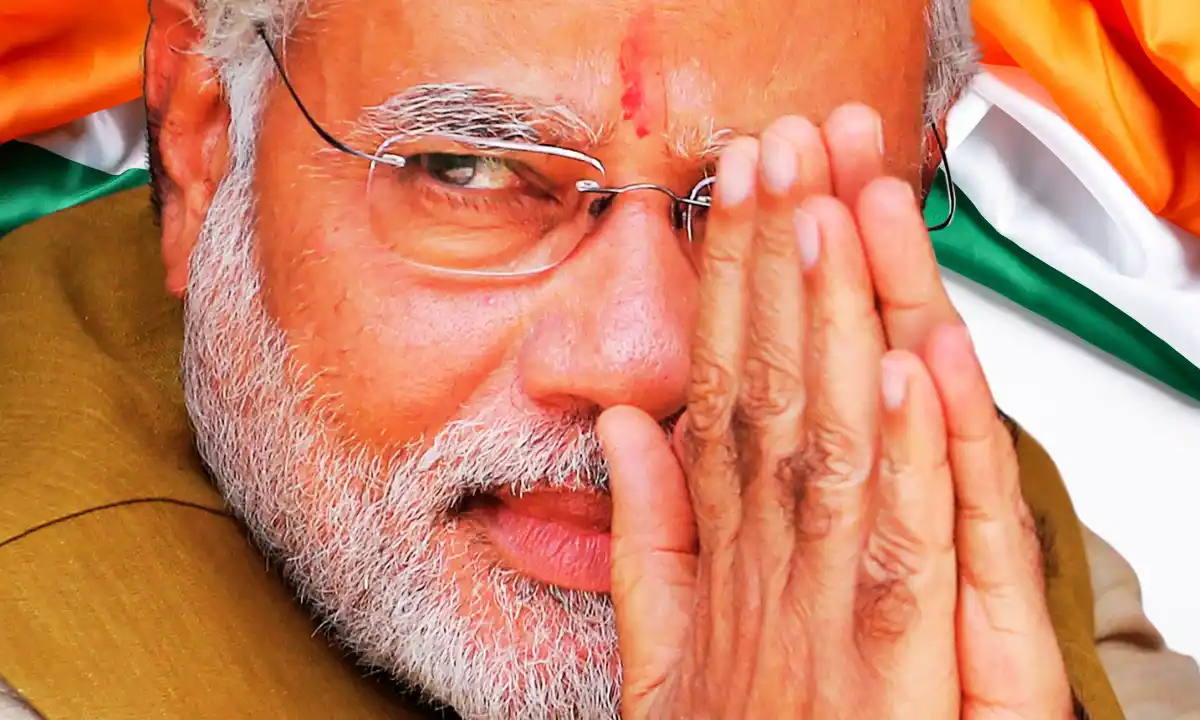
In a world marked by stark economic disparities, the criteria for entering the coveted 1% club vary significantly from one country to another. International property adviser Knight Frank has leveraged its Wealth Sizing Model to precisely quantify the wealth required to become a member of this elite group in various nations. The results are eye-opening, shedding light on the vast disparities in wealth distribution across the globe.
The Wealthy Tiers
Before we delve into the specific thresholds, it’s important to understand the two primary categories of wealth:
- HNWIs (High Net Worth Individuals): Individuals with a net worth of $1 million (£800.8k) or more.
- UHNWIs (Ultra-High Net Worth Individuals): Those with a staggering net worth of $30 million (£23.9m) or more.
Now, let’s explore the minimum wealth required in 25 select countries and territories worldwide, all of which are denominated in US dollars.
Kenya: $20,000 (£16k)
In Kenya, the bar is set remarkably low, with a net worth of just $20,000 (£16k) securing a spot among the nation’s top 1%. Shockingly, according to Oxfam, a mere 0.1% of the population possesses more wealth than the remaining 99.9%. This wealth inequality issue is exacerbated by the fact that the number of millionaires is projected to surge by an astounding 80% over the next decade, even as two million Kenyans fell into poverty during the pandemic.
Philippines: $57,000 (£45.7k)
To join the wealthiest 1% in the Philippines, one needs a net worth of $57,000 (£45.7k). This select group holds a substantial 17% of the nation’s total wealth, while the bottom 50% possesses just 14%. These figures suggest that the Philippines still has a long road ahead to achieve its goal of eradicating poverty by 2040.
South Africa: $109,000 (£87.5k)
South Africa grapples with extreme wealth inequality, being widely recognized as the most economically unequal country globally. Despite this, the richest 1% can enter the club with a relatively modest $109,000 (£87.5k). Astonishingly, the top 10% of residents own over 80% of the country’s wealth, and nearly 18.5 million people are expected to be living in extreme poverty by 2025.
Mexico: $383,000 (£307.2k)
Mexico sets a higher bar for entry into its top 1%, requiring a net worth of $383,000 (£307.2k). While Mexico City was once anticipated to become the world’s seventh-richest city by 2025, the COVID-19 pandemic caused economic fluctuations, leaving a significant portion of the Mexican population in economic hardship.
Brazil: $433,000 (£345.8k)
In Brazil, wealth inequality is stark, with the richest 0.1% making in a month what a minimum wage earner would need 19 years to accumulate. To join the top 1%, you’ll need a net worth of $433,000 (£345.8k). This wealth gap is exemplified by the fact that it would take the six wealthiest men in Brazil 36 years to spend their combined wealth, even if they spent $1 million Brazilian reals ($203.1k/£162k) every day.
Malaysia: $485,000 (£386.7k)
Malaysia’s richest 1% must possess a net worth of $485,000 (£386.7k), making it one of the higher thresholds among Southeast Asian countries. Despite recent income growth for the bottom 40% of Malaysians, inequality remains a significant concern. Approximately 5.6% of the population lives in absolute poverty, while the number of high net worth individuals (HNWIs) is expected to increase substantially by 2026.
Romania: $587,000 (£468.2k)
In Europe, many nations require well over $1 million (£800.8k) to enter the 1% club, but Romania bucks this trend with a threshold of just $587,000 (£468.2k). The country experienced a dip in its millionaire population due to the COVID-19 pandemic but is expected to rebound, reaching approximately 35,000 millionaires by 2025.
Saudi Arabia: $740,000 (£590k)
Inequality runs rampant in Saudi Arabia, where a net worth of $740,000 (£590k) is needed to join the wealthiest 1%. According to World Economics, Saudi Arabia ranks low on the inequality scale, with a score of 28.2 out of 100, where 100 represents perfect equality. The country also witnessed a significant surge in its UHNWI population in recent years, surpassing all other Middle Eastern nations.
Czechia: $880,000 (£701k)
Czechia, also known as the Czech Republic, boasts a threshold of $880,000 (£701k) to enter its top 1%. Inequality is notably less extreme in this European nation compared to its counterparts, with a World Economics inequality index score of 74.2.
Mainland China: $960,000 (£764.8k)
Mainland China’s wealthiest 1% now requires a net worth of $960,000 (£764.8k) for entry. This nation is not only home to a substantial number of top-tier wealth holders but also houses over five million UHNWIs, the second-highest globally, according to Statista’s December 2022 data.
UAE: $1.6 million (£1.28k)
The United Arab Emirates (UAE) is the first country where a net worth of at least $1 million is needed to join the richest 1%. The UAE experienced a significant influx of UHNWIs due to its successful response to the COVID-19 pandemic, with an estimated 2,000 millionaires relocating to the nation since 2020. This influx has propelled the emirate’s wealth to impressive heights, expected to reach $1 trillion (£797bn) by 2026.
Japan: $1.7 million (£1.35m)
In Japan, the threshold stands at $1.7 million (£1.35m). The nation’s wealth was affected by a weak Yen, leading to a 3.5% decrease in the wealth held by Japan’s HNWI population. The number of HNWIs in the nation also decreased by 2.8%.
Spain: $2.5 million (£1.9m)
To enter the richest 1% club in Spain, one must possess a minimum net worth of $2.5 million (£1.9m). Spain’s wealthy are not shy about investing, with a notable 14% of Spanish investors planning to engage in transactions exceeding $20 million (£15.9m) this year.
Italy: $2.6 million (£2.07m)
Italy raised its threshold to $2.6 million (£2.07m) in 2023, a significant increase from $1.4 million (£1m) in 2021. Despite initial setbacks caused by the COVID-19 pandemic, Italy’s economy and the personal net worth of its citizens have rebounded. Currently, Italy is home to the seventh-largest population of billionaires globally, with 64 residing within its borders.
UK: $3.3 million (£2.6m)
The UK sets the bar at $3.3 million (£2.6m) or higher to join its 1% club. Interestingly, the super-rich in the UK are consistently amassing more wealth. Although the number of billionaires decreased slightly between 2022 and 2023, the remaining 171 British billionaires saw their combined wealth soar by almost £31 billion ($38.9bn).
Hong Kong: $3.4 million (£2.7m)
Hong Kong, with a threshold of $3.4 million (£2.7m), demonstrates the stark contrast between the average yearly salary of its residents and the fortune needed to enter the 1% club. The average yearly salary in Hong Kong is approximately $56,000 (£44.6k), nearly 60 times less than the wealth required for elite status.
France: $3.5 million (£2.8m)
France’s wealthiest 1% must possess a minimum of $3.5 million (£2.8m). While this threshold is modest in comparison to some other nations, it still places France among the wealthier countries. France has the second-highest number of millionaires in Europe, with 5.6% of its adult population holding at least $1 million, according to 2022 data from Credit Suisse.
Singapore: $3.5 million (£2.8m)
Singapore mirrors France with a threshold of $3.5 million (£2.8m) for its richest 1%. The country is home to 298,650 millionaires, representing a significant 12.7% of the adult population. Between 2021 and 2022, Singapore also witnessed a noteworthy 6.9% increase in its UHNWI population.
Ireland: $4.3 million (£3.4m)
Ireland boasts the third-highest threshold in Europe, requiring a net worth of at least $4.3 million (£3.4m) to qualify for the country’s 1% elite. The nation’s robust economic growth, with an annual GDP growth rate of 5.6%, is reflected in the increasing population of UHNWIs, which rose by 3.9% last year.
USA: $5.1 million (£4.06m)
The United States sets a threshold of $5.1 million (£4.06m) to enter its 1% club. While the USA ranks fifth globally in terms of the 1% threshold, it boasts the largest population of HNWIs and UHNWIs, along with the highest number of billionaires worldwide. The country’s UHNWI population is expected to grow by 24.6% in the coming years, establishing it as the home to 34% of the world’s UHNWIs by 2027.
New Zealand: $5.2 million (£4.1m)
New Zealand significantly increased its entry point to the richest 1%, which now stands at $5.2 million (£4.1m), up from $2.8 million (£2m) in 2021. The nation is expected to witness a substantial growth in its UHNWI population, with a forecasted increase of 64.7% between 2022 and 2027.
Australia: $5.5 million (£4.4m)
Australia follows closely behind New Zealand, setting a threshold of $5.5 million (£4.4m) for its wealthiest 1%. The nation has seemingly outpaced its neighbor, particularly in the wake of the COVID-19 pandemic, which has exacerbated wealth inequality. According to a report, 93% of economic growth gains in Australia have gone to the top 10% of income earners.
Switzerland: $6.6 million (£5.3m)
Switzerland, often associated with affluence, requires a net worth of $6.6 million (£5.3m) for entry into its 1% club. Despite its reputation for wealth, income poverty affects 8.5% of the Swiss population, as reported by the Federal Statistical Office.
Monaco: $12.4 million (£9.87m)
Monaco stands as the costliest destination to join the 1%, with a staggering threshold of $12.4 million (£9.87m). Known for its status as a tax haven, Monaco attracts a considerable number of UHNWIs, with over 40% of its population possessing at least $1 million in wealth.
India: $175,000 (£140.6k)
In 2021, India’s 1% threshold was $60,000 (£43k), a figure expected to double by 2025. Astonishingly, just two years later, this threshold has skyrocketed to $175,000 (£140.6k), nearly three times its previous value. The growth in India’s population of ultra-high net worth individuals (UHNWIs), those with wealth exceeding $30 million (£23.9m), is projected to increase by a remarkable 58.4% by 2027, ushering in an additional 34 billionaires.






Piece of writing writing is also a excitement, if you be familiar with afterward you
can write if not it is complex to write.